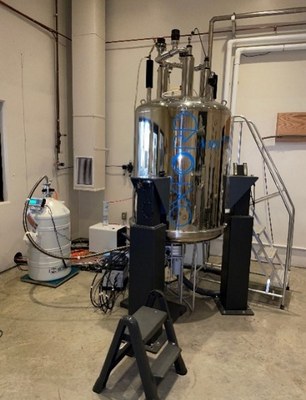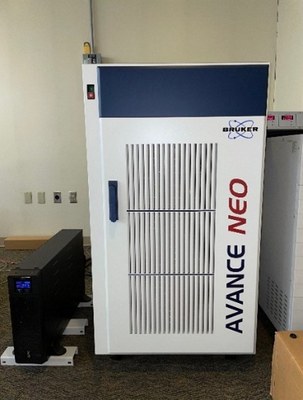NMR
The UofL Health – Brown Cancer Center (BCC) Nuclear Magnetic Resonance (NMR) Shared Core Facility occupies a suite in the Molecular Imaging Research Center (MIRC), located in the rear of the BCC. This facility currently houses a 600 MHz Bruker Avance Neo NMR spectrometer, which is available for both collaborative efforts and as a fee-for-service.
The 4-channel Bruker Avance Neo 14.1 T system (600 MHz for protons) is equipped with a 5 mm H/F{CN} Prodigy probe. This configuration enables a wide range of 3D experiments to be carried out on isotopically labeled proteins. The nitrogen cooled Prodigy probe provides a welcome increase in sensitivity, which is especially valuable for less soluble proteins or complexes, dilute metabolite samples, larger systems, and for metastable systems.
The NMR Facility, as an example, could provide the following information:
- Three-dimensional biomolecular structure determination at atomic level resolution in solution – this will aid in the development and optimization of drug candidates.
- Characterization of biomolecular motions from picoseconds to seconds that are important for understanding the relationship between dynamics, structure, and function.
- Characterization of protein-protein, protein-DNA and protein-small molecule interactions
- Stable Isotope Resolved Metabolomics (SIRM)-follow the metabolism of 13C-labeled metabolites, like glucose and lactone, to delineate the amplification or reduction of flux through metabolomic pathways.
The users can either carry out the necessary experiments either on their own with suitable training or collaboratively with the faculty/staff.
14.1T, 4.2K Oxford/(600 MHz) Bruker Avance Neo |
|---|
| 4 Channel NMR Spectrometer |
 |  |
|
|---|
 Facebook
Facebook Twitter
Twitter Linkedin
Linkedin